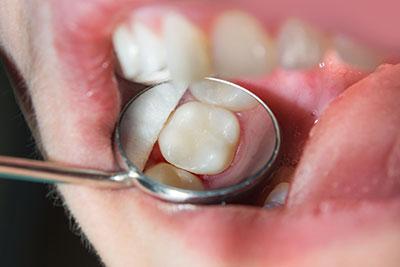Resin Composite Filings
 Composite filings are a type of dental restoration that allows for a more aesthetically pleasing result, without compromising the structural integrity of the teeth. Made from a resin-based composite, these fillings are well-known for their ability to mimic the natural color and contours of the tooth, making them an excellent choice for those who desire a seamless and natural appearance.
Composite filings are a type of dental restoration that allows for a more aesthetically pleasing result, without compromising the structural integrity of the teeth. Made from a resin-based composite, these fillings are well-known for their ability to mimic the natural color and contours of the tooth, making them an excellent choice for those who desire a seamless and natural appearance.
The procedure for placing composite fillings involves several key steps. First, Dr. Wong and our hygiene team will remove any decayed tooth material and clean the area thoroughly. Then, the composite material is applied in layers, with each layer being hardened or cured with a special light. This process continues until the cavity is entirely filled. The final step involves shaping the composite material to match the tooth's natural shape and polishing it to prevent premature wear and staining.
Despite the aesthetic advantages of composite filings, there are a few considerations to bear in mind. For instance, they might not be as durable as other types of fillings, such as amalgam or gold, especially for large cavities. Additionally, the procedure for composite fillings can be more time-consuming as it requires the cavity to be kept clean and dry while the filling is being applied. However, for many individuals, the cosmetic benefits of composite fillings outweigh these potential downsides.
When it comes to dental restoration options, there are several alternatives to composite fillings, each with their own set of benefits and drawbacks. Amalgam fillings, for instance, are a long-standing choice known for their durability and affordability. However, their metallic color may be less attractive to patients seeking a natural appearance for their teeth. Gold fillings, while offering excellent durability and biocompatibility, are typically the most costly option and require multiple dental visits for placement.
Ceramic fillings, usually made of porcelain, are highly resistant to staining and can match the tooth's natural color nearly as well as composite fillings. However, ceramic tends to be more brittle, requiring a larger amount of healthy tooth to be removed to accommodate the filling. Finally, glass ionomer fillings are a suitable choice for non-load-bearing tooth surfaces and for pediatric dentistry due to their ability to slowly release fluoride. Yet, they are less durable and need to be replaced more frequently than composite, amalgam, or gold fillings.
While composite fillings offer a winning balance between aesthetics and functionality, the choice of a dental restoration option should take into account multiple factors including the location and size of the cavity, patient's aesthetic preferences, cost considerations, and potential allergies or sensitivities. It’s always best to have a comprehensive discussion with Nelson Wong, DDS at Bishop Ranch Dentistry to decide the best course of action.

